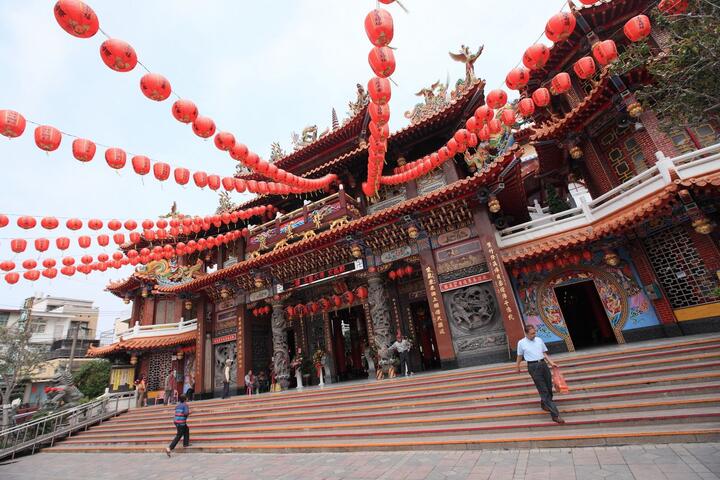Ziyun Rock Introduction
Ziyun Rock, which enshrines Guanyin Bodhisattva, was built during the Kangxi period of the Qing Dynasty. Over the past 300 years, it has undergone multiple renovations. The major reconstruction from 1972 to 1980 lasted for over eight years, resulting in a completely renewed appearance. Locals commonly refer to Ziyun Rock as "Guanyin Pavilion," and it is one of the important religious centers in central Taiwan. A cultural building has been constructed, integrating religion, culture, and tourism, making it a well-known attraction in Qingshui. At the center of Ziyun Rock is a large main hall, flanked on both sides by three-story bell towers. The dazzling glazed tiles layer upon layer extend toward the back of the hall. The main hall enshrines Guanyin Bodhisattva and is a two-story structure adorned with stunning coffered ceilings, giving the temple an opulent appearance. The exterior of the cultural building features traditional Chinese architectural style and religious ambiance, housing facilities such as a reading room, temple history museum, cultural activity center, library, periodical room, children's room, grand hall, and a space for worshippers. Walking from the main hall to the rear, there is a small garden with natural stone rocks, artificial hills, small bridges, flowing water, and various blooming flowers and unique trees, all designed with great creativity. The garden also features an ancient stone tablet from the 43rd year of the Qianlong period, which is one of the temple's historical artifacts. The renowned Ziyun Rock attracts many visitors from afar to pay their respects, with a steady stream of worshippers regardless of whether it is a weekend or a weekday.






























